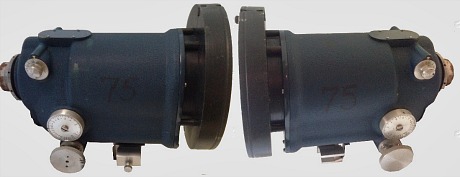Over the last day or so I’ve been scratching my head over more bad information on the Great Innocents Mumps Mystery, but after calling and sifting around for a couple of hours an answer came along that seemed to finally make sense. I’m frankly getting sick of this story so I’m just going to cut to the chase. Problems with Bausch & Lomb CinemaScope lenses during the ’50s were the cause of the syndrome called the CinemaScope mumps, which made images (particularly faces) in the 2.35:1 image look wider or fatter than they naturally were. It turns out there were three kinds of B & L CinemaScope lenses between ’53 and the early ’60s. The very early kind, which delivered serious mump distortion, was used on The Robe, How to Marry a Millionaire and Beyond The Three Mile Reef. Then another lens was developed and used during the mid to late ’50s, one which lessened or modified the mumps without making them disappear. And then came the third kind of Bausch & Lomb CinemaScope lens, which was known as the E-series or blue lens as the housing was colored blue as opposed to grey with the earlier versions. The E-series went a long way to correcting the mumps altogether, and The Innocents dp FreddIe Francis used the E-series lens during most of the shooting, hence the absence of mumps in that film. It’s all explained on a certain page within American Widescreen Museum. And that’s it. I won’t be touching this topic again.

The E series or blue lens used, apparently on a preferential basis, by dp Freddie Francis on filming of The Innocents.









